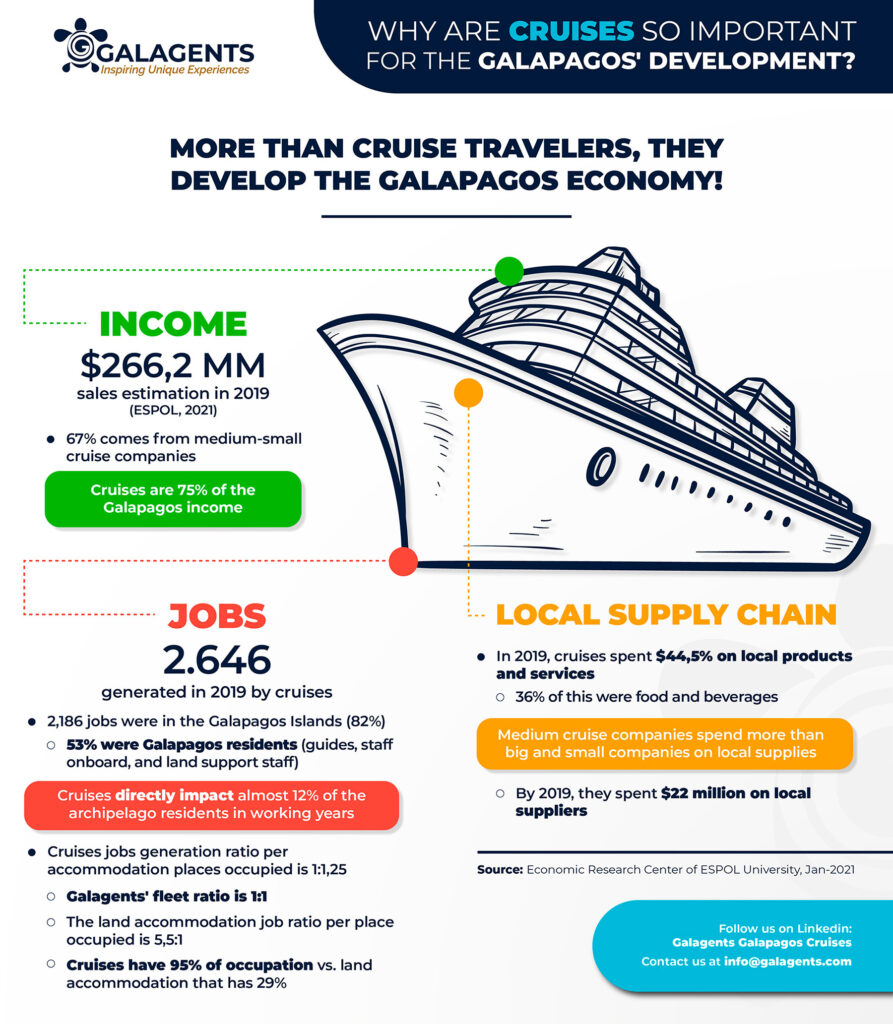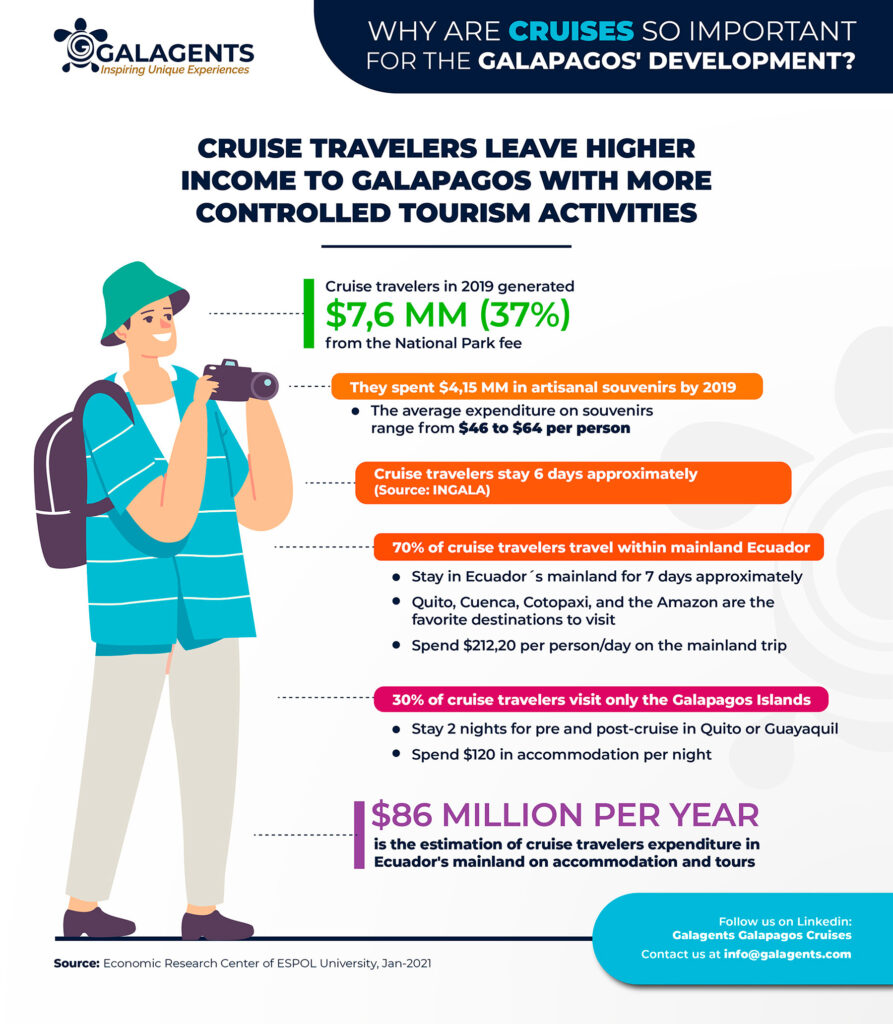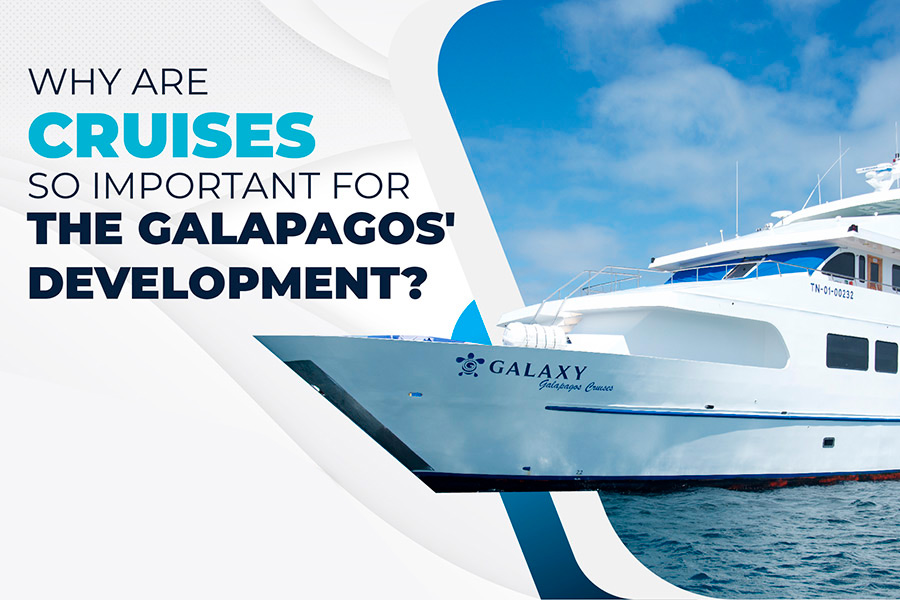More than cruise travelers, they develop the Galapagos economy!
We all know how important the cruise industry is for the Galapagos Islands. Yet, people know very little in terms of numbers about its impact on the archipelago economy. Thus, in this post, we decided to show you some numbers based on a recent study published in the Economic Research Center of ESPOL University.
Besides what people may think, cruise travelers have an enormous effect on the economic development of the Galapagos Islands and Ecuador mainland.
According to ESPOL’s (Escuela Politécnica Ecuador) sales estimation, the total cruise sales in 2019 were $266,2MM. 67% of the sales come from medium and small cruise companies (64). Moreover, cruise trips represented 75% of the total income for the Galapagos Islands’ tourism activities in 2019.
In terms of job generation, cruise companies employed 2,646 people in 2019 between Galapagos and the mainland. 82% of them are from the archipelago (2,186 people), and more than 53% are residents among naturalist guides and staff onboard and land-support.
Even though cruise companies represent 8% of the touristic companies registered within the islands, they directly impact almost 12% of the archipelago residents in working years.
On the other hand, cruises generate one (1) job for every 1,25 accommodation places occupied on cruise ships because they have a 95% occupation rate. However, the land accommodation in Galapagos has a 29% occupation rate, representing that 5,5 occupied hotel places generate one job.
The direct job ratio per occupancy in Galagent’s fleet is 1:1. Meaning that every cabin occupied generates one job onboard our cruise ships.
Cruises aligned to the Galapagos economic and conservation goals by offering high-income levels with the least number of incoming travelers to reduce the impact on the islands’ fragile ecosystem.

Medium cruise companies rely on local suppliers and services
Aside from the job generation within the Galapagos, cruise companies require local services and products that also dynamize the islands’ economy.
In 2019, the cruise company sector spent $44,95 MM on local products and services. The most important item was food and beverages, representing 36% of the total expenditure. Thus, medium cruises companies spent more locally than large and small cruises companies by 2019 generated $22,13 million for local suppliers.
In the case of Galagents, the majority of our purchases are local, except for products that really need to be imported from Ecuador’s mainland. We work mainly with small and medium food producers in Santa Cruz, San Cristobal, and Isabela.
If you want to know what Galagents did to reactivate the economy in Galapagos during the COVID-19 outbreak, please check our previous post here.
Cruise travelers leave higher income to Galapagos with more controlled tourism activities
Regarding the profile of the cruise travelers, it may vary in terms of age, nationality, level of income, among other variables. However, there is an average profile that we can devise.
The first thing we can highlight is that, according to the ESPOL study, cruise travelers in 2019 generated $7,6 MM (37%) from the National Park fee that they pay at their arrival to the archipelago.
Traveling can be a synonym of souvenirs purchase, and in the Galapagos, cruise tourists spend on average from $46 up to $64 per person on souvenirs. Last 2019, they spent a total of $4,15 MM on artisanal souvenirs during their trip.
Regarding the trip length, the ESPOL found that the average stay of cruise travelers is six (6) days, according to the transit control card. Moreover, cruise travelers have a significant impact on mainland Ecuador as well.
70% of the cruise travelers take tours within Ecuador mainland for approximately seven (7) days with a $212,2 daily cost by mean. Some of their favorite destinations are Quito, Cuenca, Cotopaxi, and the Amazon.
The other 30% come only to visit the Enchanted Islands, yet they need to spend at least two nights for a pre and post-cruise trip due to the logistics to travel to the archipelago. The average expenditure by night, in this case, is $120 per accommodation either in Quito or Guayaquil, the only two city airports that connect the mainland with Galapagos.
Therefore, the ESPOL estimates that the total expenditure that cruise travelers can have in Ecuador mainland by year is $86 MM only on accommodation and tours within the country aside from the Galapagos Islands.

In conclusion, Galapagos cruises offer a significant impact on the local economy by providing higher income to the islands ($266 on average), with fewer numbers of visitors compared to land travelers, generating jobs more efficiently, and in the case of medium cruises by supporting more the local supply chain, dynamizing the local economy.

